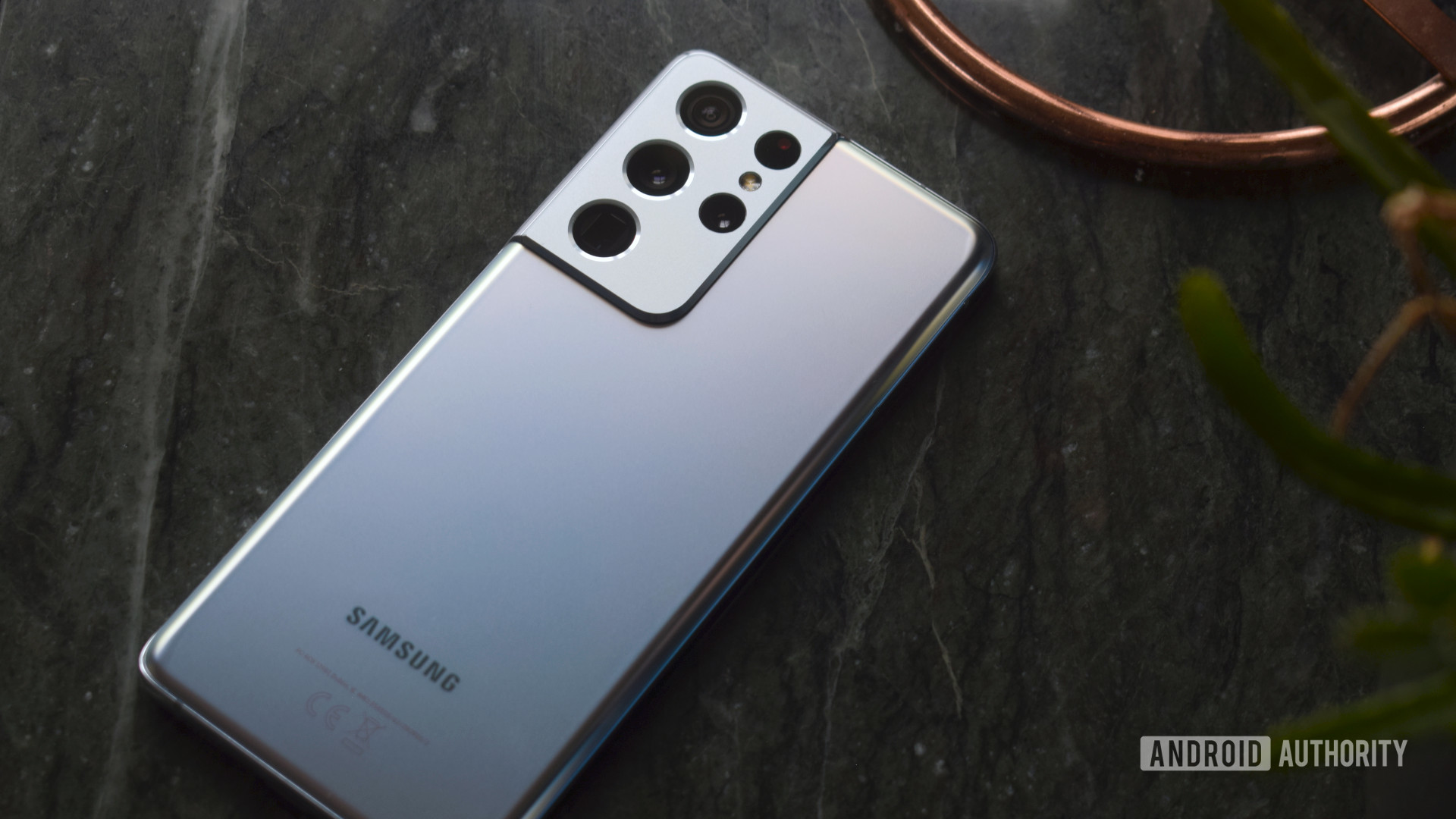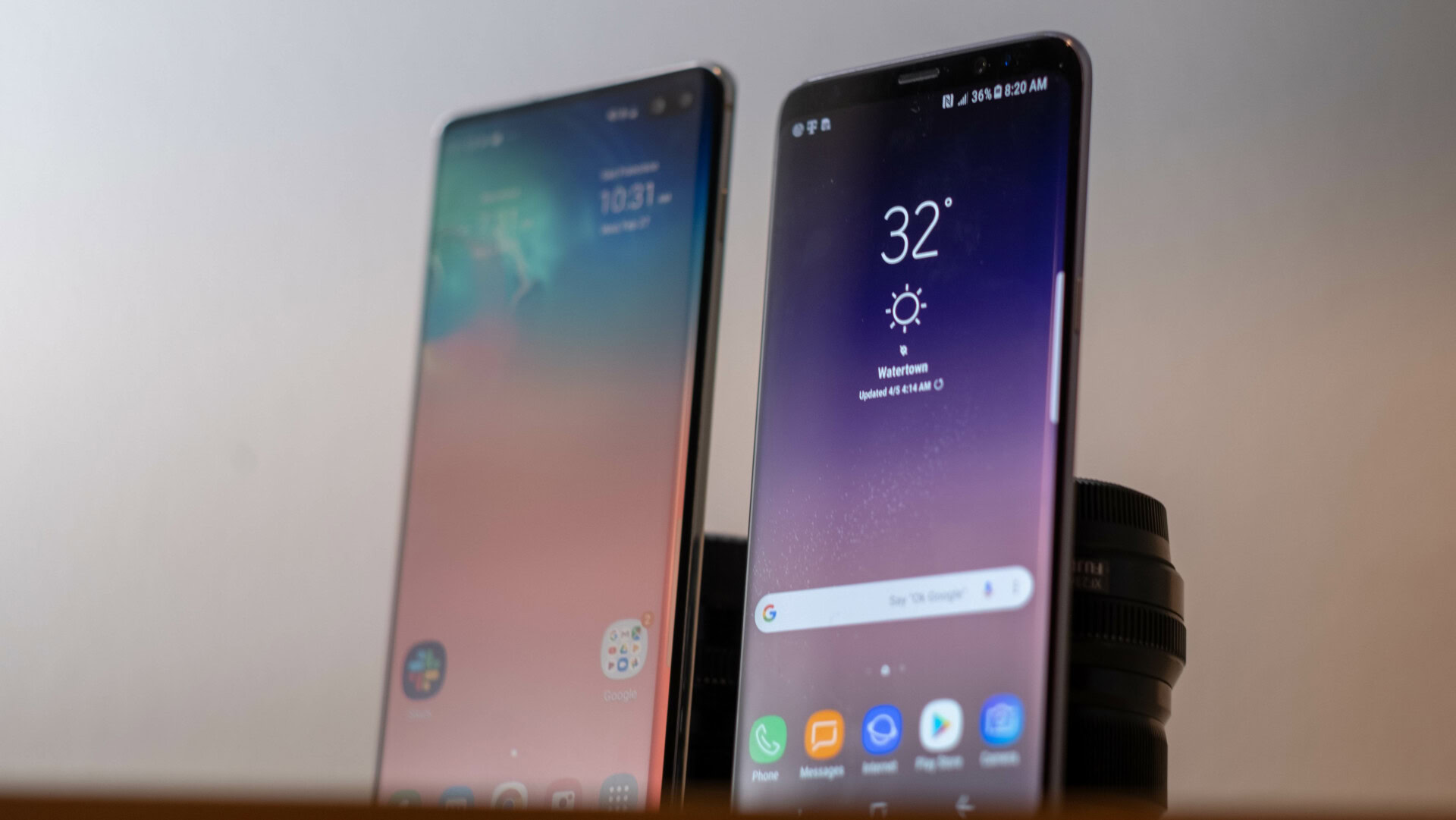
Robert Triggs / Android Authority
Samsung’s Galaxy S series phones offer top-notch screens, class-leading image quality, and expected premium features (e.g. IP68 rating, wireless charging). When you combine these factors with global availability, it’s easy to see why Samsung’s flagships are among the best-selling high-end phones around.
But one constant source of contention is that a Galaxy S phone in one region can have worse performance, battery life, and image quality than the same device in another market. This discrepancy exists because Samsung usually offers two different chipsets in the Galaxy S series, depending on the region. The US tends to receive phones powered by Qualcomm Snapdragon processors, while EMEA markets and India tend to see devices powered by Samsung’s own Exynos chipsets.
The long running Exynos vs Snapdragon rivalry could hit new heights with the Galaxy S22.
However, Snapdragon and Exynos flagship processors aren’t made equal. Sometimes one chipset is better than the other, offering improved battery life and/or superior CPU/GPU performance, effectively creating two tiers of Galaxy S customers. We’ve seen significant differences in all of these areas in the past, and 2022 might be another one of those years, with Samsung’s Exynos 2200 shaping up to be quite different from Qualcomm’s Snapdragon 8 Gen 1 in a couple of crucial areas — which could have knock-on effects for the upcoming Samsung Galaxy S22.
A short history of Exynos vs Snapdragon

A recap of some of the biggest Exynos vs Snapdragon discrepancies is in order before we get into what’s likely to stir the pot again this year. So here’s a rundown of some of the more important differences in recent times.
Performance
2020’s Exynos 990 in the Galaxy S20 series was considered the low point for the Exynos family from a performance perspective. Our own testing showed that the Snapdragon 865 variant offered better multi-core CPU performance and much better graphical performance, while the two were virtually tied in single-core benchmarks. We can trace similar performance differences back as early as 2012’s Galaxy S3. Benchmarks at the time showed that the Snapdragon version was able to beat the Exynos model in CPU tests, despite the Snapdragon model offering a dual-core CPU versus the Exynos variant’s quad-core design.
Last year’s Galaxy S21 series was available with either a Snapdragon 888 chipset or the Exynos 2100, and we saw the gap narrow between the two SoCs. In fact, our testing found that the two were neck and neck when it came to CPU performance, but Qualcomm’s variant still reigned supreme in the GPU category (albeit with a reduced gap). The Snapdragon model has been the better choice for gamers in recent years.
Battery life
The situation seems to be more favorable for Exynos variants when it comes to endurance. The Exynos 990 may have been the nadir of Samsung’s mobile chip efforts, but our testing found that Galaxy S20 series variants equipped with this chipset beat the Snapdragon 865 variant (albeit by between 15 and 30 minutes). This is likely due to the Exynos chipset throttling back in the name of endurance, sacrificing performance for battery life, but it’s still notable anyway.
The Exynos 2100 version of the Galaxy S21 Ultra repeated this feat, lasting almost half an hour longer than the Snapdragon 888 version in our Speed Test G endurance test. In saying so, we also found that the Exynos variant throttled performance sooner.
Read more: Snapdragon 8 Gen 1 vs Exynos 2200 vs Dimensity 9000 — Next-gen SoC showdown
Camera
Another area that sees differences between Exynos and Snapdragon variants is camera quality, as DXOMark and YouTuber Danny Winget showed that the Snapdragon-powered Galaxy S21 Ultra has better image quality than the Exynos model.
This difference isn’t readily apparent during the day and the two variants seem to trade blows when the sun is out. But the Exynos variant definitely shows plenty more noise in low-light scenarios when you look a little closer. Check out a comparison by Winget in this screenshot.
Video capabilities
Finally, the chipsets aren’t made equal when it comes to video recording. One of the most prominent examples was the Exynos 8895 inside the Galaxy S8 and Note 8 supporting 4K/60fps recording while the Snapdragon 835 lacked this feature. Meanwhile, the Exynos 9820 inside the Galaxy S10 series supported 8K recording before the equivalent Snapdragon chipset offered it.
Unfortunately for Exynos users in both cases, the Exynos variants didn’t officially implement their higher-quality recording capabilities in devices. Instead, Samsung waited for the Snapdragon chip to catch up and support those capabilities before adopting it in both models.
Another example of video differences between variants is AV1 support, as the Exynos Galaxy S21 variant supports the new codec standard. This standard promises the same video quality with smaller file sizes, with Netflix already supporting this more efficient format. Unfortunately, the Snapdragon 888 inside US Galaxy S21 phones lacked this support, as does the upcoming Snapdragon 8 Gen 1.
What to expect in 2022?

These differences, especially in recent years, have resulted in enthusiasts urging Samsung to offer versions with the Snapdragon chipset in more markets. These calls are understandable too, as the differences can (and often do) have a real-world effect. For example, the Galaxy S20’s Exynos 990 chipset struggled with some advanced games compared to the Snapdragon variant. It’s even led some enthusiasts to post a petition calling on Samsung to either ditch the Exynos variant or sell it at a reduced price.
Samsung will continue offering an Exynos and Snapdragon variant of its Galaxy phones with the Galaxy S22 series. The Exynos 2200 will power Exynos versions while the Snapdragon 8 Gen 1 is set to be inside Snapdragon variants. But this year is the most important one in a long time for the Samsung/Qualcomm chipset rivalry.
More reading: A history of Samsung’s Exynos flagship processors
Qualcomm and Samsung use the same CPU setup for their 2022 flagship processors, featuring one Cortex-X2 for heavy lifting, three Cortex-A710 cores, and four Cortex-A510 cores for lightweight tasks. There’s no word on the Exynos 2200’s CPU clock speeds, cache size, or other CPU-related details though. We’re guessing that the CPU differences will be negligible here unless there’s a big difference in clock speed, cache size, optimizations, and other factors.
However, the GPU is one area where things are expected to get spicy, as the Exynos 2200 features a custom GPU for the first time. The GPU is made in partnership with AMD and uses RDNA2 graphics cores derived from desktops and consoles.
Expectations are therefore high that the Exynos 2200 will out-perform the Snapdragon 8 Gen 1 in this regard, given that Samsung is essentially using desktop and PS5 tech in the Exynos chipset (albeit with reduced power envelopes, fewer cores, and other tweaks). But this is just the first attempt, so expectations should be tempered as a result. Furthermore, at least one leaker suggested that the Exynos 2200’s GPU has seen a clock speed downgrade from initial targets.
The Exynos 2200 is the first Samsung mobile chipset with AMD graphics, making it an important release in the Exynos and Snapdragon rivalry.
Then there’s the fact that Qualcomm has touted a massive GPU improvement for the Snapdragon 8 Gen 1. More specifically, Qualcomm says the new chipset’s GPU offers 30% better performance and 60% better performance with the Vulkan API. So even if the Exynos 2200 GPU is excellent, the Snapdragon chipset will have also made a major step forward this generation.
The Snapdragon 8 Gen 1 and Exynos 2200 are pretty similar elsewhere on paper, although each chipset has a notable exclusive feature or two. For one, the Snapdragon SoC supports 8K HDR recording. Meanwhile, the Exynos 2200 supports hardware-enabled ray tracing for better reflections and lighting. Samsung has historically offered feature parity for the most part. However, it’s still unclear whether we’ll actually see the Snapdragon-powered Galaxy S22 series ship with 8K HDR recording while the Exynos version ships with ray tracing.
Either way, it’s a little too early to tell whether the Exynos or Snapdragon model will reign supreme in 2022. But we know that the pressure will be on Samsung’s in-house division this year now that it has the might of AMD behind it.
Which one do you think will reign supreme in the latest chapter of Exynos versus Snapdragon? Let us know via the poll below.
Which one will be the superior chipset in 2022?
163 votes



